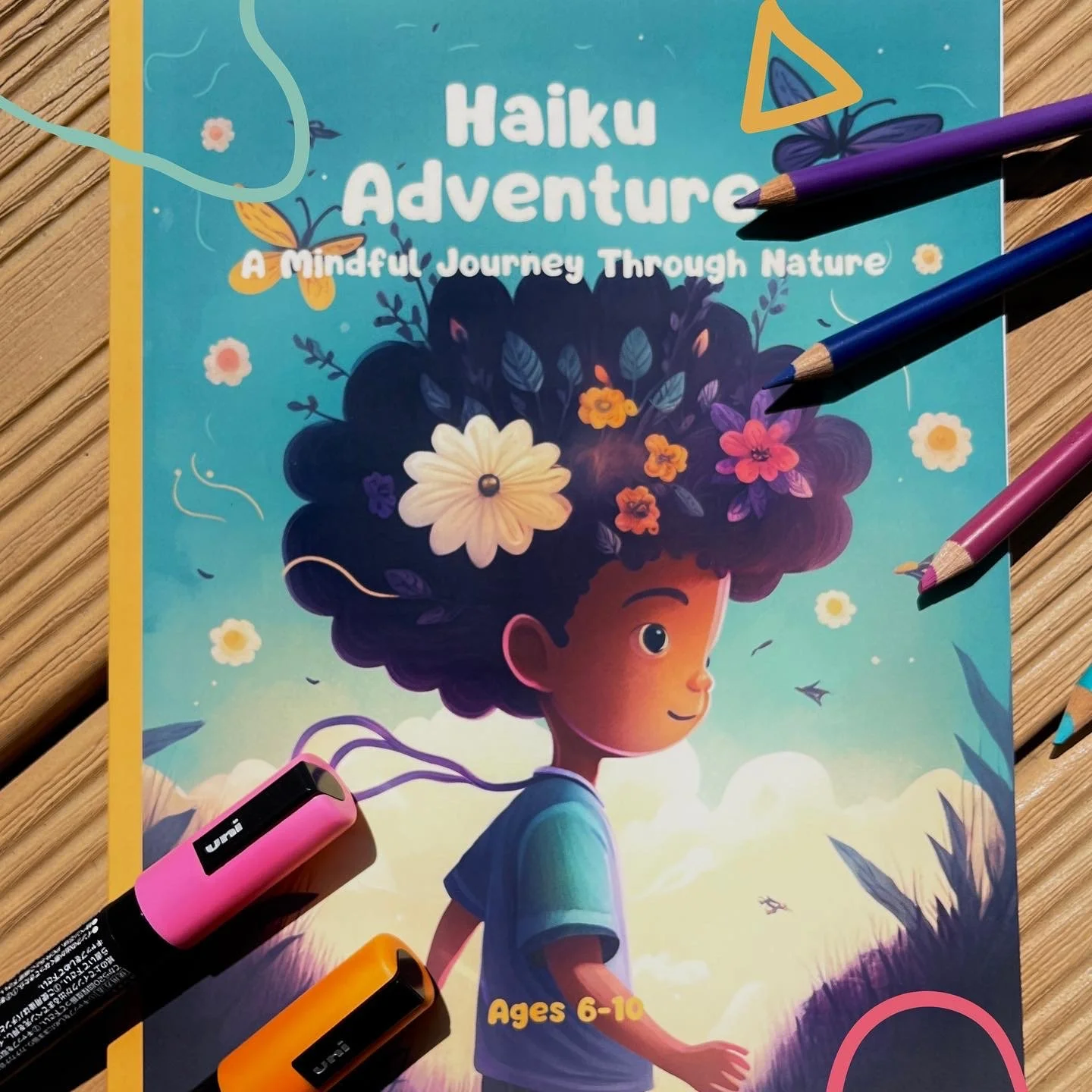Bringing Mindfulness to Art Education: Introducing the Haiku Adventure Workbook
As an artist dedicated to exploring the intersections of culture, mindfulness, and creativity, I am thrilled to share a resource that aligns with these themes—the Haiku Adventure Workbook. This workbook is not just a tool for learning haiku but a comprehensive guide for fostering mindfulness and creativity in students, making it an ideal addition to art education programs in Japanese schools abroad.
Why the Haiku Adventure Workbook Enhances Art Education
Cultural Connection and Expression:
The workbook introduces students to haiku, a traditional form of Japanese poetry, enabling them to connect with their cultural heritage through hands-on activities. This aligns perfectly with my own artistic philosophy of merging tradition with modern expression.
Mindfulness Through Art:
Incorporating mindfulness exercises, the workbook helps students develop focus and emotional regulation. Activities like mindful nature walks and simple meditation practices complement the creative process, much like my own approach to art.
Creative Development:
Guided haiku writing prompts and creative activities such as coloring and drawing encourage students to express themselves artistically. This nurturing of creativity is central to my work, where I blend various art forms to create holistic experiences.
Versatile Learning Tool:
The workbook is suitable for both group and individual activities, making it flexible for classroom settings, afterschool programs, or special events embracing multicultural education. It includes activities that can be enjoyed both indoors and outdoors, offering versatility in how and where it is used.
Holistic Learning Experience:
The workbook integrates various educational elements, from cultural lessons and creative writing to mindfulness practices, promoting a well-rounded development for students.
FAQ
What is mindfulness for children?
Mindfulness for children involves teaching them to focus on the present moment in a non-judgmental way. This practice includes activities such as breathing exercises, guided imagery, and mindful movement. The goal is to help children develop awareness of their thoughts, feelings, and bodily sensations, which can promote emotional regulation and reduce stress. According to a systematic review, mindfulness-based interventions (MBIs) for children have shown positive outcomes in cognitive performance, emotional resilience, and behavioral regulation (Systematic Reviews Journal).
How do you build mindfulness in children?
Building mindfulness in children can be achieved through several practical methods:
Breathing exercises: Simple techniques where children focus on their breath can help them center their attention.
Mindful activities: Activities such as coloring, nature walks, and mindful eating engage children in the present moment.
Mindfulness apps and programs: There are several apps designed for children that guide them through mindfulness exercises in an engaging and fun way. Consistency and making the practice enjoyable are key factors in effectively building mindfulness in children (Frontiers in Psychology).
Can children be taught mindfulness?
Yes, children can be taught mindfulness. Various studies have shown that mindfulness practices can be effectively integrated into school curriculums and therapeutic settings. Programs such as Mindful Schools and MindUp have been implemented in educational contexts, showing improvements in attention, emotional regulation, and stress management among children. Moreover, mindfulness has been particularly beneficial for children with anxiety and ADHD, helping them develop better self-awareness and coping strategies (Child Mind Institute).
Does mindfulness help children with ADHD?
Mindfulness can significantly help children with ADHD. Research has indicated that mindfulness training can reduce symptoms of ADHD, such as inattention and hyperactivity, by improving self-regulation and executive functioning skills. Mindfulness practices help children with ADHD develop better control over their thoughts and actions, leading to improved behavior and reduced stress. Studies have shown that mindfulness interventions for children with ADHD lead to significant reductions in anxiety and behavioral problems (MIT News; Child Mind Institute).
Conclusion
The Haiku Adventure Workbook is more than an educational tool; it’s a gateway to cultural appreciation, mindfulness, and creative expression. For Japanese schools abroad, it provides a valuable resource that aligns with both educational goals and cultural values.

